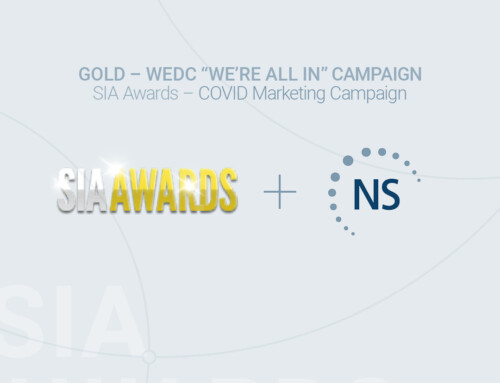Communicating to a global audience is tricky but manageable with the right partner.
Where to Begin
Global marketing is nothing new. As soon as a local market becomes saturated the natural instinct of a business is to look for new ones. If an animal’s food supply dwindles, it moves to where the food supply is plentiful – the same is true of businesses.
The challenge of entering new markets lies in the strategy, which is derived by collecting and analyzing insights. Without the proper insights, entering a new market can, and likely will, be met with poor results. Before entering a new market, you can create a powerful consumer insight by focusing on a singular, important fact about that market. To start, objectively describe the current situation and consumer behavior. Then ask “why.” Why is that fact true? Write down your answer. Now ask why again. And again, until you’ve come upon an insight. This insight will greatly inform your decision about entering a new market.
For example, let’s say your company creates products for the outdoors enthusiast and you find data shows that people are bothered by mosquitoes, but don’t like to use bug repellant. People’s annoyance with mosquitos may keep them from going outdoors and thereby purchasing your outdoor equipment. This is the “fact” that you would work with to create an insight.
So, now ask the question, “why won’t people use bug spray?” People are unsure which bug repellants are safe to use or if they are safe at all? Why? They are unsure what to look for on the label. Why? There is little information about it and mixed reviews on products. There’s the insight.
Armed with this insight, your company could create a web destination or point-of-purchase display that provides information about what to look for on labels. Maybe you create a new product other than a repellant to ward off bugs. Now that you have this information, you can enter the market with a strong foundation for a potentially successful strategy.
Different Global Marketing Models
With your newly crafted and vetted insights, the next big hurdle is deciding between localization or standardization. Localization takes each market’s population and culture into consideration and adapts the message and creative elements of the campaign to fit that region. Everything from the visuals, to language, to social standards, are all things that should be analyzed in a localization model.
Conversely, standardization means that a brand enters each market with a similar strategy. Standardization assumes that culturally, every market will accept the brand similarly. This is a much more cost-effective approach than localization, but it runs the risk of dissociation with a population if they do not connect with the marketing message.
As noted by 1Papavassiliou, N. & Stathakopoulos in the European Journal of Marketing, the advantages of each are as follows:
Advantages of Standardization
- The company can maintain a consistent image and brand identity.
- It can minimize confusion among buyers by transference of experience.
- The company can develop a single tactical approach to easier control and monitor.
- Standardization enables the company to take advantage of economies of scale in production and experience and learning curve effects.
Advantages of Localization
- Localization is essential to meet the needs and wants of the targeted markets due to differences in culture, economic and industrial development, media access and political and legal restrictions.
- Localization helps the company rapidly and aggressively deal with local intense competition, such as local low-price products, which force them to differentiate their products to adapt to the competitive environment.
- Long-term profitability through higher sales accrued from superior utilization of the different consumer needs across countries.
Choose a strategy based on accrued insights.
Different Agencies, Different Approaches
Whichever approach the marketer chooses, the right agency partner can be crucial. Many of the large holding companies that have rosters of agencies all over the world will take a brand global by using all of their internal resources, creating a more homogenized approach to marketing. While this may seem like the easier method, there are few companies outside of the world’s major brands that can afford holding company fees.
Conversely, a company can work with multiple agencies worldwide to bring its brand to a global market. This will likely save money but will create a mountain of work in coordination of efforts across disparate agencies.
A Different Path
The old saying goes, “you can only have two of these three – price, speed or quality.” If you are budget-minded, then you must sacrifice either speed-to-market or the quality of the communications. If you need to get to the market quickly, you’re likely going to pay a hefty price or have a subpar strategy. Either way, there are sacrifices to be made, if you believe in that adage. In today’s world, brands demand all three.
One option that can deliver on all three is independent agency networks. Organizations such as MAGNET and thenetworkone bring together the world’s leading independent agencies with the goal of sharing resources, tools, and talents.
To illustrate, let’s take a deeper look at how the model works. When an agency is part of an independent network, it can tap local resources in each region. This helps to keep budgets in check. Local agencies also ensure that the speed to market is fast because the local agency will know the barriers to entry and will be able to work within the local systems more efficiently than an agency trying to do it remotely. Lastly, your lead agency will act on behalf of your brand with all the separate partner agencies, checking quality throughout the activation of the campaign.
Networks give companies the global footprint they are looking for along with a single point of contact. Global CMOs can now receive all three – price, speed and quality – with no sacrifices.
All the World’s a Stage
Once a brand has decided they need a global strategy, there are a lot of options to consider. From facts and insights to localization versus standardization, CMOs have a lot of decisions to make. The good news is there are agency options that can deliver at a global scale without breaking the bank or creating a monumental amount of work. Bringing a brand to the world is easier than ever if the right partner is chosen from the beginning.
Work Cited
1Papavassiliou, N. & Stathakopoulos, V. (1997). Standardisation versus adaptation of international advertising strategies: towards a framework. European Journal of Marketing, 31(7), 504-27. https://www.google.com/url?sa=t&rct=j&q=&esrc=s&source=web&cd=&cad=rja&uact=8&ved=2ahUKEwjg7JnVlNbxAhVkAp0JHd9FC0QQFjANegQICxAD&url=https%3A%2F%2Fcore.ac.uk%2Fdownload%2Fpdf%2F234627657.pdf&usg=AOvVaw0qGXT5oHY3THgza0w91PTQ






